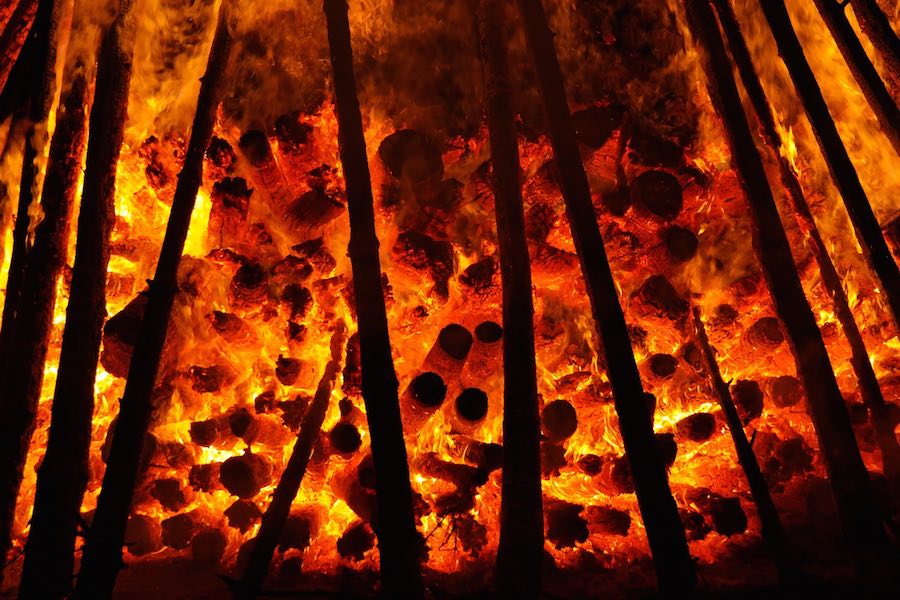
A large and growing body of evidence reveals that the Earth is getting warmer. Month after month, year after year, we are seeing above average global temperature records. Heat waves are smashing records all around the world. July 2015 was no exception even by the standards of a warming world. July is traditionally the hottest month of the calendar year, but all the hottest months of July have occurred in recent years and in 2015 the midsummer month went down in history as the hottest month ever recorded.
However, if we want to come to an understanding of how temperature readings provide support for global warming we need to look at the longer term. When examined in a wider context, the heat records that were set in July are part of an ominous warming trend.
Prior to the month of July record high temperatures were recorded for the month of June. A similar record was set in the month of May. In fact, according to NASA, every month this year has ranked among the top four warmest. Japanese Meteorological Agency (JMA) data also indicate that May, June, and July were the warmest on record and 5 of 7 months in 2015 are the warmest on record. The only exceptions are February and April, which were the third warmest on record. If we explore the monthly global average temperature records from the JMA over recent years we see strong support for the warming trend.
Similar observations can be found in yearly global average temperature data with 2014 being the hottest year ever recorded. With the first seven months of this year being the warmest on record, 2015 is on track to eclipse 2014. If we include 2015, the ten warmest years ever recorded have all occurred since 2002. If we expand to even larger time frames, the trend is unmistakable. We have experienced 360 straight months or 30 consecutive years of above average temperatures.
Together more than a century of data corroborates the observation that our planet is warming. This is not just isolated weather, this is strong evidence for a changing climate.
The climate is changing and our weather is heating up an accelerated pace. As explained by Joe Romm in an August 14, 2015 Think Progress article, “We appear to be in the midst of the long-awaited jump in global temperatures.”
Even as the summer of 2015 was getting underway we were already setting heat records in large swaths of the Western world. There were also deadly heat waves in India, Pakistan and elsewhere. Heat is deadly, thousands have died this year and as many as 70,000 Europeans died in the heat wave of 2003.
Deaths associated with heat waves are hardly the only problem, warmer temperatures have a range of adverse effects including food insecurity. Hot global temperatures also cause extreme weather events ranging from droughts to floods. Heat contributes to sea level rise and storm surges that cause flooding in coastal areas. Warmer temperatures are causing the Arctic to lose 13 million square kilometers of sea ice every decade and 450 billion tons of Antarctic and Greenland land ice every year.
The heat helped to fuel the forest fires that marked the start of the summer in North America and a number of fires continue to burn on the continent.
Rising temperatures also have a range of impacts that may not be intuitively obvious. The complex feedback loop between wildfires and climate change like the feedback loop between El Niño and global warming are prime examples. El Niño plays a role in both weather events and climate change. The hot weather we experienced in July can be largely attributed to the El Niño effect and research reveals that warmer temperatures increase the frequency of El Niño events which in turn increase global warming.
The long term temperature data alongside a wide range of scientific evidence clearly indicates that global warming is a current day reality. The research also suggests that it is getting worse. We know the cause and we know what we must do to stop it. The earth is warming because we are putting 40 billion tons of CO2 into the air every year. To minimize rising heat levels we must minimize greenhouse gas emissions.
Global temperatures are clearly trending hotter over time which begs the question, how much heat is required to spur global action?
——————–
Richard Matthews is a consultant, eco-entrepreneur, green investor and author of numerous articles on sustainable positioning, eco-economics and enviro-politics. He is the owner of The Green Market Oracle, a leading sustainable business site and one of the Web’s most comprehensive resources on the business of the environment. Find The Green Market on Facebook and follow The Green Market’s twitter feed.
Image credit: Hans Braxmeier, courtesy pixabay


